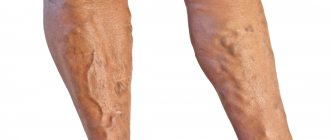All over the world, cancer deaths are the second most common cause of death in the world.
The leading position still remains with cardiovascular diseases.
Unfortunately, many cases of oncology end in death, even despite the fact that modern doctors are making great efforts to find a cure for the terrible “plague of the 21st century.”
One of the most terrible forms of the disease is pancreatic cancer. As a rule, this disease has a dismal prognosis due to the fact that it can only be diagnosed at the last stage of development.
The thing is that people do not undergo regular examinations, but turn to the doctor only when they are faced with very painful symptoms.
If we look at the statistics, more than 22 percent of patients manage to overcome pancreatic cancer.
These data were taken into account that 6 percent of people were identified as having early-stage pancreatic cancer.
Reasons for the development of the disease
Pancreatic cancer develops under the influence of a number of factors. This process is greatly influenced by the environment and the poor lifestyle of people.
Precancerous conditions of the body can provoke pancreatic cancer.
These include the development of chronic inflammation in the gland, adenoma, cystic lesions, and recurrent hereditary pancreatitis.
With age, the likelihood of confirming the terrible diagnosis of pancreatic cancer increases. People over 55 years of age are at risk.
Smoking has an important influence on the development of pathology. Tobacco addiction provokes cancer and these are not just words.
Based on statistics, we can say that pancreatic cancer occurs in smokers 2-3 times more often than in people who do not have such a bad habit.
It is possible that other pathologies can also provoke cancer of the head of the pancreas, for example, diabetes mellitus, genetic predisposition, excess weight, unhealthy diet, when fats predominate in the diet.
Chemical carcinogens such as asbestos, β-naphthylamine, and benzidine have a negative effect on humans.
It is important to lead an active lifestyle; sedentary work can also cause disruptions in the body and trigger the development of a terrible disease - cancer of the head of the pancreas; in fact, the same diagnosis can be confirmed if a person constantly drinks alcohol.
Diet food
An important aspect of treatment is diet during and after treatment. The diet will need to be followed for the rest of your life, since any strong impact of food on the pancreas can cause a relapse. The diet itself does not provide serious assistance in treatment; it only helps to reduce the degree of symptoms that worsen when leaving the diet. At all stages of the disease, fatty acids should be avoided.
It is prohibited to use:
- fried, salty, fatty;
- spices;
- whole milk;
- sweet, rich products;
- sour, canned;
- beans, any dishes with peas;
- coffee, cocoa, alcohol-containing drinks, carbonated lemonades.
The diet should include:
- eggs, honey;
- lean meat;
- vegetable or low-fat broths;
- vegetables fruits;
- not too fresh baked goods made from wholemeal flour;
- millet, rice, buckwheat, semolina porridges;
- dairy products.
It is important to remember that diet is an individual factor. Foods to which a person is allergic should not be consumed, even if they are healthy and must be consumed.
Manifestation of gland cancer
Symptoms of gland cancer increase as the tumor gains momentum.
In the early stages, cancer of the head of the pancreas may not make itself felt at all.
There is a saying among doctors that “cancer doesn’t hurt.” Indeed, this fact carries a great danger, because potential patients do not seek help from a doctor on time.
The manifestation of the disease will be associated with a lack of appetite, attacks of fever, when the patient’s body temperature increases sharply.
It is possible that a person will suddenly lose weight and his skin will acquire a yellow tint. He may experience serious pain. Patients also often complain that they lose their appetite.
If we look at the symptoms of pancreatic cancer in women and men in more detail, it is worth noting that first of all, neoplasms make themselves felt by pain. It will depend on the location of the tumor.
Similar early signs of pancreatic cancer appear in 75 percent of patients.
They arise due to compression of the nerve trunks or penetration of the tumor through the tissue membrane.
Less commonly, pancreatic cancer can be a consequence of blockage of the gallbladder ducts or caused by peritonitis, when an exacerbation of an attack of pancreatitis is observed.
An inflammatory infection triggers the development of a cancerous process, which will subsequently make itself felt in the form of pain.
The first symptoms of pain may be girdling in nature or spread throughout the abdominal cavity, but also be localized, radiating to the area of the right shoulder blade or back.
If a person complains of girdle pain, then a similar phenomenon is possible when the gallbladder ducts are blocked by a tumor.
Gradually, the pain syndrome will intensify, and even the skin areas will begin to turn yellow. Often, a similar development of events occurs if the head of the pancreas is affected.
Such symptoms of pancreatic cancer in women and men occur in 75 percent of cases.
The sign is specific to this type of pathology. Yellowing is caused by the fact that there is stagnation of bile in the biliary tract system.
It is triggered by the penetration of malignant areas that have entered the gallbladder duct.
Since the symptom is not caused by an infectious process, this process is mechanical.
Every day the jaundice gradually increases. Symptoms of pancreatic cancer at the next stage of development of the pathology boil down to the fact that the integument acquires a red tint, due to the accumulation of bilirubin.
It continues to oxidize, and therefore the skin acquires a greenish tint. Bile acids can irritate the receptors of the skin, and the disease progresses noticeably.
While the symptoms of pancreatic cancer may not appear in the earlier stages, later they become so intense that the itching does not allow a person to live in peace.
Itching provokes nervous outbursts and does not even allow you to sleep peacefully. Scratching marks, which are presented in multiple forms, may remain on the skin.
A sharp weight loss is observed, the patient ceases to feel the desire to eat even previously favorite foods.
It has also been noticed that meat or fatty foods seem disgusting to a person, apathy increases, as does weakness throughout the body.
Sometimes there may be attacks of vomiting or nausea. But the sequence of what symptoms gland cancer may have changes.
Itching may be the first sign of cancer, occurring even before the skin turns yellow. There are also situations when initially a person suddenly begins to lose weight.
Features of the structure of the gland
The importance of the pancreas should not be underestimated. The organ is part of the digestive system, responsible for multiple functions.
It is characterized by the fact that it has the same structure in both men and women. The gland is not a steam gland, it produces food enzymes, and is also responsible for the production of insulin.
Its structure consists of the structure of the body, tail and head. The body of the organ will be adjacent to the wall of the stomach, the tail to the spleen, and the head to the duodenum.
Therefore, depending on which part of the organ is defective, subsequent disruption of the work and structure of neighboring organs will occur.
As practice shows, in 70 percent of cases, a malignant tumor is located in the head of the pancreatic gland.
It develops on the basis of the epithelium. From statistics it is clear that in 90 percent of cases the tumor will have a similar structure as adenocarcinoma.
Only different degrees of malignancy vary. When the tumor is located in the tail area, the neoplasm occurs much less frequently.
5-7 percent of cases with similar developments of events have been recorded in practice. With total damage to the gland, 20 percent of people face a tumor that affects the body of the entire organ.
Treatment
Due to the fact that the tumor in the parenchyma is usually found in the proliferation stage, treatment of pancreatic cancer
involves the use of radical methods of therapy. Treatment is complicated by the fact that the primary tumor (that is, arising as an independent disease) usually does not respond to radiation and chemotherapy.
The only method to radically slow down the tumor process remains surgery. Depending on the location of the tumor and the degree of its invasion into neighboring organs, the following is carried out:
- partial or complete excision (resection) of the pancreas;
- splenectomy (excision of the spleen);
- resection of the duodenum or bile duct.
Metastases are more sensitive to conservative therapy, so they are treated with chemotherapy, if necessary, in combination with radiation.
For inoperable tumors, the patient is prescribed palliative treatment to maintain a satisfactory quality of remaining life. Sometimes surgical treatment is used for this purpose, for example, when it is necessary to restore digestive functions or ensure the removal of bile.
Patients with a resected pancreas require lifelong replacement therapy (insulin and pancreatic enzymes). Medication regimens are prescribed by the treating gastroenterologist, surgeon or oncologist.
Clinical picture when diagnosing pathology
If a patient turns to a doctor for help in the early stages of developing glandular cancer, then when taking a blood test it is not always possible to note disturbances in the body’s functioning.
But advanced forms of pathologies are characterized by changes such as an increase in ESR, while hemoglobin may be significantly less than the prescribed norm.
Hyperbilirubinemia, hypoproteinemia, and increased alkaline phosphatase are also observed.
Doctors agree that the most effective analysis in this case would be testing for tumor markers.
Carbonic anhydrate glycoprotein is used to identify tumors. If a person is healthy, then the norm varies within 37 units. In the case of pancreatic gland oncology, the concentration of carbonic anhydrate glycoprotein will be several times higher, sometimes not only tens, but also hundreds and thousands.
It is important to note that if the body is experiencing the initial stage of oncology development, then the indicator may not exceed the acceptable standards, and therefore this method is not always relevant for use.
Sometimes, it is not needed at all, even if the patient is part of the group susceptible to cancer.
In recent years, scientists have made a lot of progress in this area. The high efficiency of the method for detecting the CA 494 antigen in the blood of people who were faced with an early stage of oncology was determined.
This method is especially useful when it is necessary to differentiate a malignant pathology from a chronic form of pancreatitis.
First signs: is it possible to detect cancer at an early stage?
Symptoms and treatment of pancreatic tumors directly depend on the stage of development of the pathological process. It is impossible to suspect a deviation at an early stage. There are no specific signs, which is an ideal condition for further spread of the tumor.
At the first stage of the malignant process, the symptoms are similar to other diseases. A person experiences: disturbances in the functioning of the intestines (usually constipation), bloating, general malaise, weakness and loss of strength.
Diagnostic tests
One of the most accessible and justified methods for detecting pancreatic cancer today is an ultrasound examination of the abdominal cavity.
Due to the qualifications of the doctor and the quality of the equipment used, a tumor can be detected if it is larger than 2 cm.
If the diagnosis is confirmed, it is necessary to clarify the size, position of the tumor, as well as to what extent it has involved nearby organs in the process.
In this case, it is recommended to resort to another method of studying the body. This is a computed tomography scan.
The analysis is indeed very reliable, but very expensive. If the tumor is more than 3 cm in size, then CT will determine all of the above characteristics.
It is worth considering that this study is associated with a large dosage of x-ray radiation, so it does not need to be carried out frequently or in situations where its use can be dispensed with.
This study is comparable in information content to MRI. Only there are limiting factors for magnetic resonance imaging.
The examination cannot be carried out if there are metal implants in the body, which means metal plates, prosthetic joints, artificial heart valves and other devices that support the normal functioning of the body.
These methods, which help identify a tumor, make it possible to clarify the location of the lesion and the tumor area.
It will also be necessary to conduct positron emission tomography, which is aimed at identifying the tumor and the presence of metastasis.
For these purposes, a radionuclide must be introduced into the body. Cancer cells actively absorb this substance.
During this process, photographs are taken with a special device to help capture how the substance is distributed in the human body.
Such research is very important during the proposed operation.
It allows you to assess the volume required for surgery, as well as whether it is necessary to use additional treatment methods such as radiation or chemotherapy.
The description of methods for diagnosing pancreatic cancer can go on for a long time, but the most important thing that needs to be clarified is that even at an early stage of the pathology, it is important to follow all the instructions of the attending physician.
You need to trust a specialist, ask questions of interest, and do not hesitate to say what exactly is bothering you. Every nuance in the treatment of oncology plays a big role.
Medicine does not stand still; new methods of treating pathology have been developed, even if recently some cases were recognized by doctors as inoperable.
All this indicates that there is a chance for recovery; you need to gain strength and faith in the best.
Medical therapy
The treatment course for oncology is never simple. Already at the first stage, when the diagnosis and causes of pancreatic cancer are clarified, many patients are faced with the need for palliative therapy.
These treatment methods boil down to creating conditions for a person to have a good quality of life.
Oncology is dangerous, but the risks increase significantly when the process of tumor development affects the bile ducts.
This fact is the main reason why such a symptom of pathology as jaundice is absent. From this we can conclude that treatment started late.
The main method of therapy will be the surgical method. But we must admit that it is not always possible.
In advanced stages of oncology, surgery is contraindicated, as well as in cases of severe general condition of the patient.
Surgical treatment will only be possible in 5-15 percent of people. The ability to perform surgery depends on the location of the tumor and the extent to which the process has spread.
The situation is further complicated by the fact that the operation itself requires a special qualification from the surgeon. This is a very technically complex surgical intervention.
This is due to the fact that the pancreas, unlike other abdominal organs, does not have a membrane.
All this prevents the organ from joining the intestine when the surgeon performs the appropriate surgical procedures.
There are many blood vessels located near the organ, which provokes complications in the form of possible bleeding.
The operation will seriously affect the patient’s condition; a person with oncology is already exhausted. It is also important to take into account the fact that with bleeding there is a risk that metastasis will spread even more seriously throughout the body.
The thing is that metastases in cancer are cascading in nature; they spread with the blood to other organs.
It is clear that foci of oncology may appear, even far from the source of infection of the body.
Colonies of malignant cells enter the liver cavity through the portal vein and then visit the lungs. In the direction with the arterial bed, they move to other organs.
To stop this process, several types of therapy are recommended - radiation and chemotherapy.
They are carried out even before operations in order to achieve an operable state, in other words, to reduce the extent of tumor spread by reducing its size.
The problem is that cancer cells of the gland are not always weakly resistant to the effects of chemotherapy drugs or radiation exposure. The funds component reaches them with difficulty.
Increasing the dosage of drugs and the intensity of the radiation regimen are unacceptable. The risk of increased side effects is quite high.
A tumor of the gland is capable of forming resistance to agents. The therapy mainly helps to improve the appearance of the skin of the human body by eliminating jaundice.
It is important to establish the patency of the small intestine, duodenum and bile duct.
It is necessary to reduce the severity of pain, restore the gland in the treatment of diabetes, and also remove other side effects.
Symptoms according to the location of pancreatic cancer
The pancreas has a complex structure and performs essential functions for our body. It mainly consists of a head, body and tail.
A tumor can develop in any of the areas, so symptoms often depend on the location of the tumor process. If the tumor affects the head of the gland, then symptoms include:
- Jaundice. The skin and mucous membranes of the eyes become jaundiced.
- Itchy skin. Rashes may appear.
- Decreased appetite and significant weight loss.
A feature of this form of the disease is colorless feces and dark urine. If, due to a tumor of the head, compression of the gallbladder and duodenum occurs, a person often feels nausea and vomiting. After vomiting, the condition improves greatly.
For pancreatic cancer, the main symptom is pain in the solar plexus, especially when the person is lying on his back. The patient tries to change the position of the body, thereby reducing the manifestation of pain symptoms.
When a tumor of the tail of the gland is affected, clinical signs are practically absent, which greatly complicates the diagnosis of the disease. In more severe stages, the disease is characterized by severe pain in the spleen and liver, and the lymph nodes are also enlarged. At this stage, in 80% of cases the patient is diagnosed with diabetes mellitus.
Preventive measures
In fact, precise preventive measures to prevent the development of pancreatic cancer have not yet been created.
The thing is that the main factor in tumor development is pancreatitis. Those. From this we can conclude that everything must be done to prevent the development of inflammation in the pancreatic gland.
Experts include recommendations on following proper balanced nutrition measures among these measures. In particular, you need to limit your consumption of fatty meats.
According to data obtained from the American Cancer Society, there were 42,470 new cases of pancreatic cancer diagnosed in 2009.
Of these, 35,240 cases resulted in death. In recent years, the risk of developing pathology has gradually subsided, but the mortality rate remains at the same level.
In the United States, pancreatic cancer is the 4th leading cause of death in the country.
The risk of developing the disease throughout your life is 1 in 72 cases. Both women and men suffer from the pathology equally. The risk may vary due to certain risk factors.
If we again turn to research, the development of the disease can be affected by the DNA of the cells of the organ itself.
Their disrupted formula entails unhealthy development of the cellular system, which provokes the formation of tumors.
Researchers have made major breakthroughs in understanding how DNA changes cause a DNA-healthy cell to develop a tumor.
It was possible to understand that DNA can mutate and activate oncogenes during this process. They become the reason for turning off tumor suppression genes.
DNA is associated with some carcinogenic familial syndromes, congenital mutations cause a very high risk of developing certain tumors, increasing the risk of pancreatic cancer.
It turned out during research that in 10 percent of cases of oncology it was DNA that became the reason for such an unfavorable diagnosis.
Sometimes they have a relationship with other types of cancer. It would be helpful to have a doctor who understands hereditary cancer syndromes. After all, these cells can be adopted from your closest relatives.
conclusions
To summarize, it is worth noting that representatives of the American Cancer Society recommend that all people undergo genetic testing to understand how prone the body is to cancer.
There are many new screenings available to identify people at risk.
Also, cell mutations can be acquired, and therefore it is necessary to eliminate bad habits, try to lead a healthy lifestyle and maintain a normal weight, and promptly treat pathologies that have developed in the body, taking into account competently developed therapy by a specialist.












